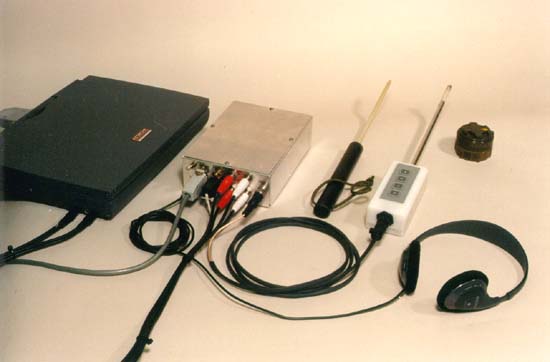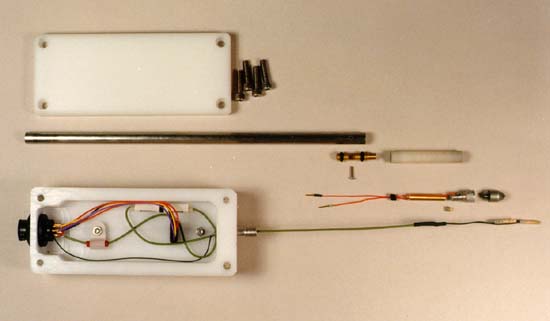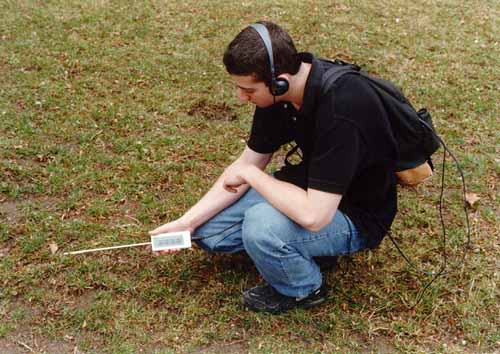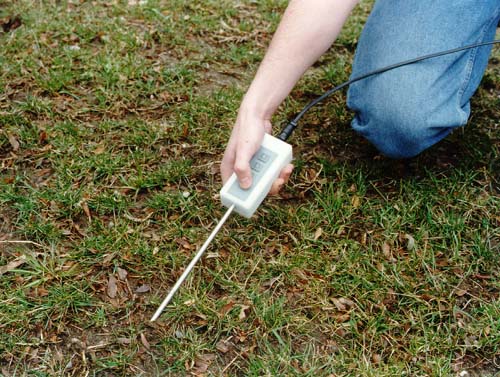complete system shown alongside standard demining probe and plastic AP mine
The metal box contains all of the electronics, and connects to the
laptop through sound and printer ports. Both are "hands-off," and are
carried in a knapsack (see below). The deminer presses the probe against
a suspect object in the ground, and initiates a measurement by pressing a
button on the handle. Approximately one second later the deminer hears
the determination ("probable mine" or "innocuous object") through the
lightweight headphones.

guts of device
(The handle is milled from delrin, with watertight pushbutton assembly
underneath and with a watertight connector at left; the thin green coax
carries transmit/receive signals to the piezo assembly, which consists
of the tiny "pill" visible between the green coax and the brass reaction
mass. The stainless probe tip unscrews from its aluminum base for easy
field replacement; the white cylindrical object is a hollow delrin holder
for the piezo and reaction mass. This is secured into the hollow stainless
tube by an o-ring-sealed brass transition piece.)

one-hand operation using push-button and headphone interface
The electronics -- less than 5 kg including laptop in this prototype --
needs no attention, and is carried in a lightweight knapsack.

close-up of push-buttons on watertight probe handle assembly
The four buttons are used to: 1) capture spectrum and identify object;
2) in-ground calibration prior to measurement; 3) archive spectrum for later
use, for example training or improvements to algorithms; 4) "live" microphone,
in lieu of normal automatic identification.




